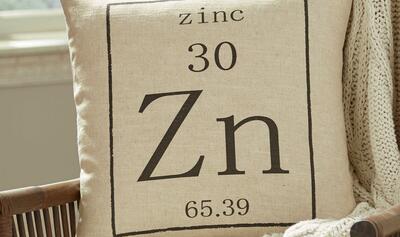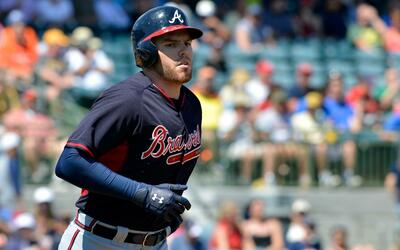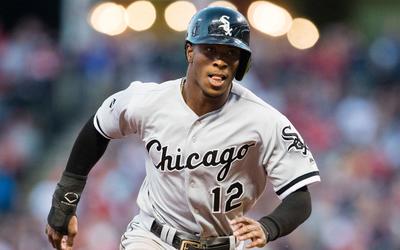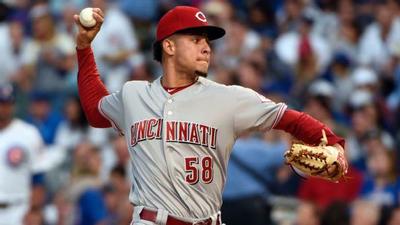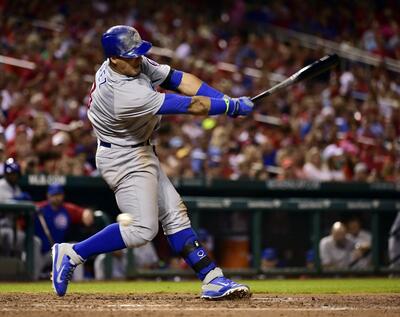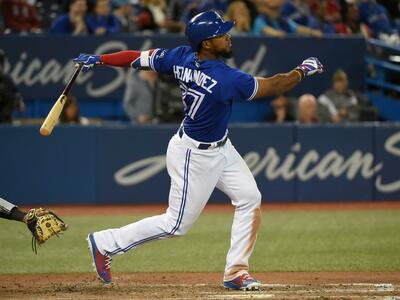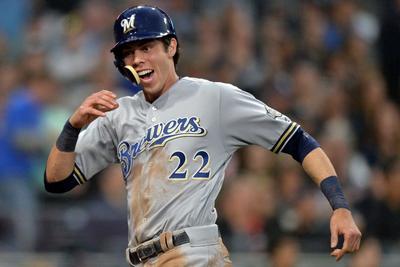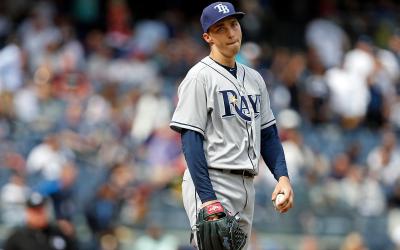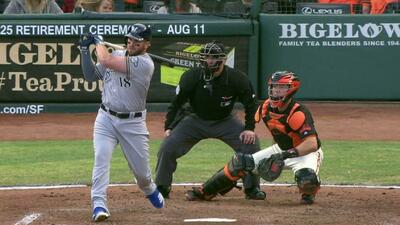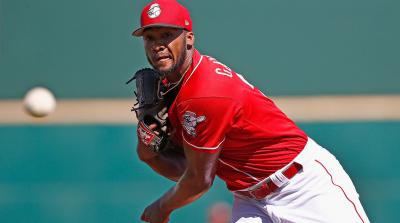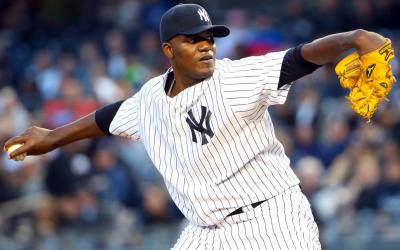Before we get to today's First Pitch I wanted to say thank you to the readers that took the time out to respond to my AL and NL Predictions blog earlier this week. I enjoy hearing the responses and while many of us will "agree to disagree"on our predictions, I really did enjoy having the back and forth. Now onto the First Pitch...
This space will be used for a variety of things this year mostly revolving around bigger statistical themes than we can't tackle while discussing individual players. Lou's piece yesterday is a perfect example of this, if you haven't read it take the time to scroll back through your email box and check it out. So, now that I get to feel like Manny Alexander trying to follow-up Cal Ripken (yikes), let's get on to what I'd like to discuss today: How to go about evaluating a potential hitter for pickup?
This is one of the most important facets of fantasy sports and probably the most important in-season skill any fantasy owner can hone. Everyone has their different ways of analyzing a potential pickup and there's certainly more ways than one to evaluate players and statistics, but I'm going to show you how I go about it. Hopefully this will provide some insight as we approach the time of year where people begin separating themselves from the pack with pickups.
The two most important things to understand initially when evaluating a player are: 1) Sample Size and 2) Opportunity. When I'm talking about Sample Size, I'm talking about understanding the concept that any player can look good enough or bad enough if the sample is small enough. The theory behind Sample Sizes is that the bigger the sample we have the more likelihood that the results we're drawing from the sample are accurate. Fortunately for us, we're analyzing a sport that caters to statisticians. In an average year a full-time hitter will get 500 AB's and a pitcher will face well over 600 batters. Because of this baseball provides statisticians the opportunity to draw conclusions about a player's ability. Unfortunately, the bad news with all of this, is early in the season we're not always privy to a big enough Sample Size that would allow us to feel comfortable drawing conclusions. This is where it's important to understand some of the tools our resident statistician Anthony Perri has provided. I'll get into these in a bit more detail later. So getting back to Sample Size, using a fairly obvious example understanding why Gil Meche's performance Monday doesn't mean he's better a pitcher going forward than Curt Schilling is important. The typical response if asked this question would be "it's just one game"and that fairly unenlightening example gets at the importance behind Sample Size. The 2nd part of the equation is Opportunity. When I refer to Opportunity, I'm referring to the player's potential Opportunity at playing time and their Opportunity within the batting order. If you're considering two players of similar skill sets for 1 roster spot and one's hitting 6th in a loaded Indians lineup and the other is hitting 7th in the Giants lineup there's a difference in their value even though there may not be a difference in their talents. Similarly, if a player is simply holding a spot for an injured star he'll have less value than a player who has the inside track at a starting position for the remainder of the season.
So the first two things we want to evaluate are a player's Opportunity for the rest of the season and we'd like to get some grasp of the player's true potential by analyzing a larger sample size than we currently have and compare it to the recent shorter track record that has made you think about adding him or dropping him. The Opportunity part of the equation is a bit more subjective. Try to understand why the player is currently playing, are they playing because of an injury to a sure-fire starter? Are they playing as part of a platoon role? Are they battling another player for playing time? You want a player that's likely to get the most playing time possible. Similarly you want to look at the lineup position the player is hitting in. Does the lineup position take advantage of this player's skill set (run producer vs. run scorer)? Will the lineup afford the player many opportunities to add "counting stats"to your team (again Runs and RBI's)? If the player you're analyzing has a better Opportunity than the player you're considering replacing, he passes the first test.
After assessing a player's Opportunity, we move onto trying to assess their Sample Size. This is where we start to delve deeper into the quantitative side, so I'm going to take the time to illustrate the 4 major statistics I'll look at for a hitter. For the hitter the 4 main statistics I want to look at are: 1) EYE 2) BHIP% 3) HR Rate and 4) .OPS. I'm going to avoid wasting too much space describing all the statistics I'm referencing here, so feel free to check out some of the articles that go into these stats a bit deeper on our insider baseball home page (http://www.fantistics.com/baseball00/M-Reference.htm). And with that let's look a bit at how I'd go about analyzing a potential pickup.
First let's look at how I'd analyze a potential hitter pickup. Once I've determined the player has a better Opportunity than the player I'm considering replacing I begin to try to analyze the current streak that's making me consider adding them vs. their track record. So first we have to check the track record, nearly every player has a track record we can analyze in this day and age that's accessible thanks to the internet. We can look up minor league stats for younger players trying to breakthrough and we can look at career stats for established veterans. Once we have the stats in hand, we want to compare the player's previous track record to the current season track record. The things we're looking for in a player that warrants picking up is an increase in the rates which they have control over: EYE, HR Rate, and OPS. If the player has an increase in all 3 of these categories and a decrease (or similar) BHIP%, the player clearly is making a meaningful progression and increased their value. This is the obvious case in which the player has increased their value. The obvious case in which a hitter hasn't increased their value much at all is when the largest increase in value is in the BHIP% statistic. If this number has increased significantly in the short time frame we're analyzing the player is likely incurring a hot streak largely brought on by sheer luck. These are some of the more obvious situations when analyzing a hitter. So which stats matter if the stats show a bit of a mixed bag? In these cases I'll put the priority on EYE. Players with better EYE's have better chances of being dominant hitters because they're displaying a better understanding of which pitches are balls and which are strikes. Consequently, a batter with a better EYE is more likely to identify which pitches can be driven with authority and thus becomes a better hitter. The other rates (HR and OPS) are more likely to be significantly influenced by the sample size we're looking at. If we're looking at a week's worth of AB's a player's HR Rate or OPS can be largely affected by just one game. This is why we emphasize the importance of understanding Sample Size. If we know there's a high likelihood of variability in the statistics we're analyzing we know they're coming with less predictability. To recap, the first thing we want to look at when analyzing a hitter is there Opportunity and the Sample Size. The Sample Size we're looking at will determine how comfortable we can feel in drawing conclusions from the data (the more data, the more comfort). The Opportunity will allow us to subjectively determine if this player will be in a situation where they'll be able to maximize their value. At this point we begin delving deeper into the statistics looking specifically for improvements in EYE, HR Rate, and OPS, while looking for a decreased BHIP%. When the statistics are mixed the best bet is to focus on improvements in EYE as improvements in this area tend to be longer lasting when looking at small samples. When looking at larger samples (75+ AB's) use all of the statistics to help tell he story. Finally, I add a bit of a subjective measure into my final approval for a pickup in which I try to estimate the player's ceiling and floor. For younger players, if the player came up as a "top prospect"or were regarded highly by scouts while moving through the minor leagues they'll get a bit more attention from me as I'll trust some of the prospect reports I've read to help raise the ceiling of the pickup. If it's a veteran player I'll try to estimate from previous years whether their performance is trending up (and the ceiling hasn't been reached) or if the player is bouncing back (and a pre-existing ceiling is there to be compared to). This bit of subjectivity helps paint a clearer picture of my best and worst case scenarios for a pickup.
Hopefully this guide through how I, personally, make the decision on picking up a player has helped give you some ideas about how to approach a potential pickup. The one thing I will stress when considering making moves this early in the season is to be patient with those hitters that have a long track record to fall back on and to be aware of those younger players carving out a niche for themselves with Opportunity. Next week I'll be back to look at how to evaluate Pitchers when looking for potential waiver wire gems!


